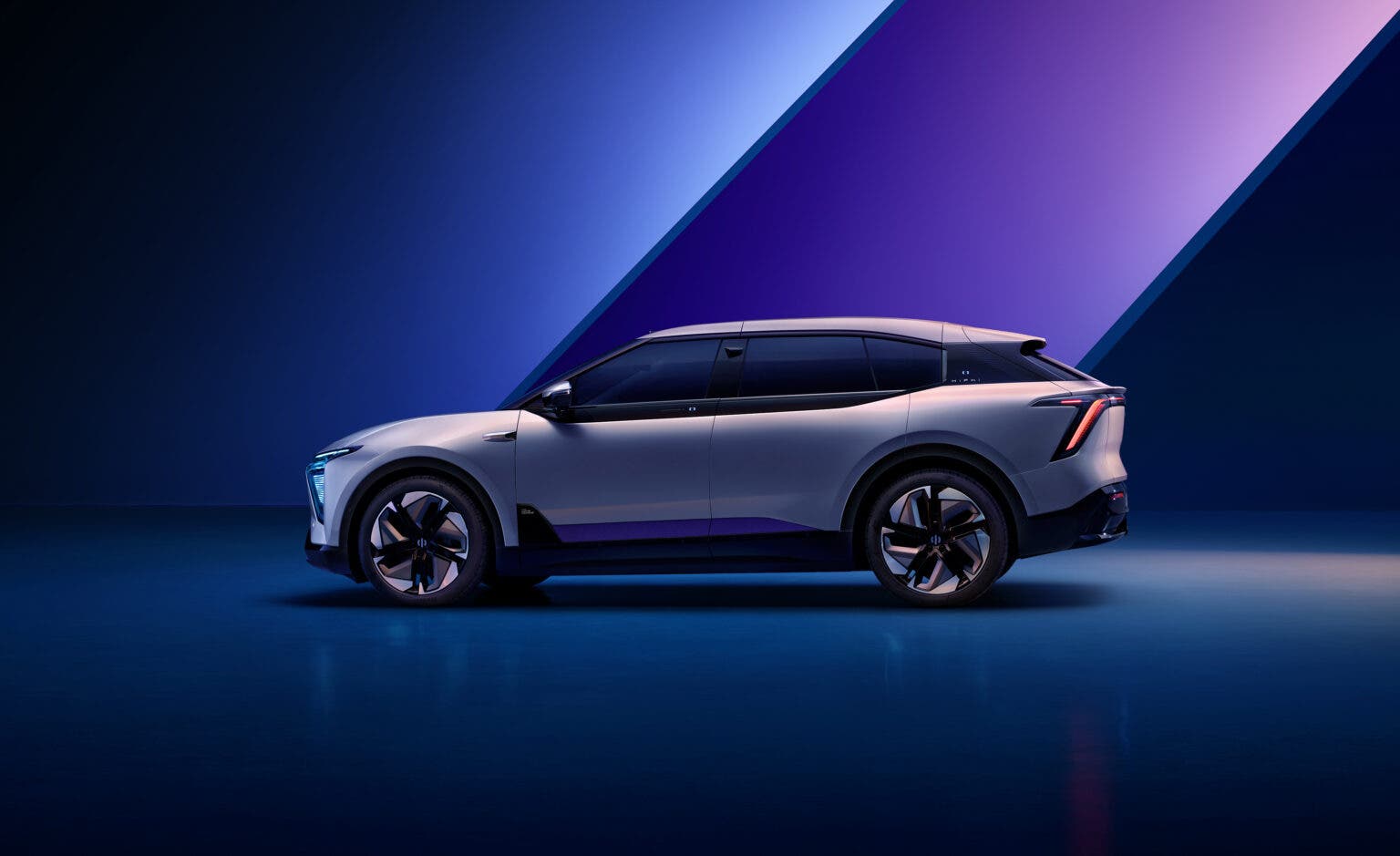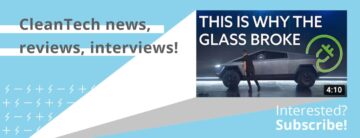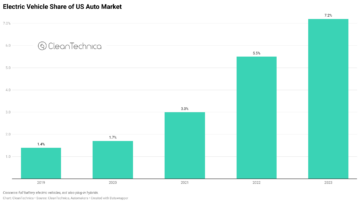
Sign up for daily news updates from CleanTechnica on email. Or follow us on Google News!
In 1968, Dionne Warwick released a song called “Do You Know The Way To San Jose” that explored how the search for fame and success can lure us away from our roots. It talks about Los Angeles being a magnet for fortune hunters who gravitate there seeking their fortune and how the first thing they do is “put a hundred down and buy a car.” Those days of cheap wheels are long gone, due largely to the rise of the SUV, according to a story by The Guardian.
The average new car in America today sells for nearly $49,000, and the average used car lists at more than $26,000. That’s a 31% increase for new cars and nearly a 40% increase for used cars since 2020, according to data from Cox Automotive. That’s despite the easing of inflation and the supply chain issues that snarled the auto industry during the pandemic. Those increases have made the total cost of ownership so high that some drivers are unable to afford a car. In a nation where public transportation is less available than it is in many other countries, not having access to a car places significant restrictions on employment and educational opportunities.
Brian Moody, a senior editor at Kelley Blue Book, tells The Guardian that automakers used the pandemic to shift product lines toward models with higher profit margins. Instead of small cars and base models, they pivoted to luxury cars and fully loaded SUV models. That means “the less expensive the car, the fewer choices you have,” according to Moody. Some industry observers have called the trend “trimflation”. A Cox Automotive report in 2023 claimed “the US new vehicle market is becoming a luxury market,” part of a “seismic shift” that for many people is “about as enjoyable as a sharp stick in the eye.”
Nevertheless, automakers are making record profits. The Guardian says the companies saw the C0vid pandemic as an opportunity. Shrinking production due to supply chain issues meant buyers were willing to pay more for new cars. Low inventory is an “opportunity to drive strong margins”, GM CEO Mary Barra told shareholders in 2022. Ford CEO Jim Farley went even further. “I want to make it extremely clear to everyone. We are going to run our business with a lower day supply than we have had in the recent past because that’s good for our company.”
The Costs Of Ownership Keep Rising
High prices are difficult enough but once that shiny new chariot finds its way into the new owner’s driveway, the costs of maintaining it are going up as well. A simple oil change can cost over $100 today. Tires cost 50% more than they did a few years ago. Even prices at the car wash have shot up.
But that’s just the small stuff. Data from the Bureau of Labor Statistics shows that the average cost of car insurance rose more than 14% between the end of 2021 and 2022, before soaring another 20% by the end of 2023, the largest one year increase since the 1970s.
Divya Sangameshwar, an insurance expert at Value Penguin, tells The Guardian those rapid increases have several causes. One is that the rising cost of vehicles and maintenance means insurers have to pay out more when things go wrong. Another is that more vehicles are getting ravaged by the climate crisis. Carfax estimates that Hurricane Ian destroyed as many as 358,000 cars in Florida and the Carolinas in 2022. The climate crisis, in turn, is being exacerbated by the trend toward massive vehicles like SUV and light duty truck offerings. Unless action is taken to reverse climate change, Sangameshwar says, “it is undeniable that it will continue to have an impact on auto insurance premiums for the next 100 years.”
Until 2022, state governments, which approve rate increases, had been keeping insurance premiums relatively flat, leading to pressure from some insurance companies who “were threatening to walk out of markets where they weren’t profitable any more,” Sangameshwar says. But now that states have relented, insurers are doing splendidly. Companies like Progressive and Travelers reported record breaking profits in 2023 thanks to the big rate increases and they say more rate increases are on the way.
Transportation, Jobs, And The SUV
Over the last two decades, American jobs have become increasingly dispersed throughout the suburbs, says David King, an associate professor of urban planning at the Arizona State University. Research shows that Americans who own cars have access to far more job options and “having a reliable car means that you’re more likely to be able to keep that job,” King says.
Urban planners want to see more public transportation options but that is a tough sell in America. Across the United States, transit usage remains much lower than it was prior to the pandemic. With Covid era federal grants due to expire this year, many transit authorities are planning service cuts, sparking fears of a “death spiral” leading to a cessation of service. The Biden administration is pumping money into rail improvements but such expenditures are widely condemned by conservatives who have never ridden a train and never intend to.
That’s why King says it’s just as important in the short run to make cars more affordable for people who need them — a proposal he calls “universal auto access.” As a planner, he envisions government subsidies for lower income people to buy or maintain cars, coupled with new incentives and regulations to steer manufacturers back toward smaller, more affordable electric vehicles. This car-positive proposal doesn’t make him popular among planning circles, King concedes, but says, “it’s a realist approach. This is the world that we have and we can still work for a better world while not leaving some people out of it.”
The Takeaway
There are some (including myself) who see a pattern of collusion among US automakers who all decided at virtually the same time to end production of traditional sedans both large and small in order to pivot to more SUV models. Those sedans are the cars that brought Americans to work and kids to soccer practice for generations. Suddenly, they just disappeared, although the Japanese and Korean companies still sell them. The SUV and light duty truck craze has become almost a mania. Are manufacturers responding to customer demands or are companies influencing customers with the hundreds of millions of dollars they spend on advertising each year?
The answer is not all one way or the other. My wife and I made the decision to spend more on a Tesla Model Y SUV rather than a less expensive Model 3 sedan few years ago simply because it is six inches taller, making it easier for folks with balky backs and creaky knees to get in and out of it. Recently our Tesla went to the body shop to fix a crease picked up in a parking lot and we drove a rented Volvo S60 sedan for 10 days. I found it impossible to get in or out of the Volvo without whacking my head. Volvos are fine cars much beloved by their owners but the car just didn’t fit me. Squeezing into the back seat through the narrow door opening was a chore only a contortionist would love.
The latest gigantic car craze is having seats for seven (or eight) people. Why? These mammoth vehicles, which all call themselves an SUV, are a status symbol for most people, a statement of wretched excess. It’s as if we all travel with a basketball team wherever we go. And of course seven seats mean bigger, heavier, thirstier — and more expensive — vehicles that cost more to repair, more to maintain, and more to insure. As a result, the dream of owning a car is fading for many Americans, with knock on negative effects for access to employment and educational opportunities.
The pandemic has raised prices for food and housing and manufactured goods of all kinds. Inflation may have eased but the cost of living, especially for those at the margins of the economy, is up dramatically since the pandemic. The SUV is not the cause of any of those things but it is a symptom of the times. No nation can aspire to greatness that does not make provision for its neediest members.
Have a tip for CleanTechnica? Want to advertise? Want to suggest a guest for our CleanTech Talk podcast? Contact us here.
Latest CleanTechnica TV Video
[embedded content]
I don’t like paywalls. You don’t like paywalls. Who likes paywalls? Here at CleanTechnica, we implemented a limited paywall for a while, but it always felt wrong — and it was always tough to decide what we should put behind there. In theory, your most exclusive and best content goes behind a paywall. But then fewer people read it!! So, we’ve decided to completely nix paywalls here at CleanTechnica. But…
Thank you!
Advertisement
CleanTechnica uses affiliate links. See our policy here.
- SEO Powered Content & PR Distribution. Get Amplified Today.
- PlatoData.Network Vertical Generative Ai. Empower Yourself. Access Here.
- PlatoAiStream. Web3 Intelligence. Knowledge Amplified. Access Here.
- PlatoESG. Carbon, CleanTech, Energy, Environment, Solar, Waste Management. Access Here.
- PlatoHealth. Biotech and Clinical Trials Intelligence. Access Here.
- Source: https://cleantechnica.com/2024/01/30/the-suv-and-the-democratization-of-driving/
- :has
- :is
- :not
- :where
- $UP
- 000
- 10
- 100
- 15%
- 2020
- 2021
- 2022
- 2023
- 36
- a
- Able
- About
- access
- According
- across
- Action
- administration
- Advertise
- Advertising
- Affiliate
- afford
- affordable
- ago
- All
- almost
- Although
- always
- america
- American
- Americans
- among
- among us
- an
- and
- Angeles
- Another
- answer
- any
- approach
- approve
- ARE
- arizona
- Arizona State University
- AS
- aspire
- Associate
- At
- Authorities
- auto
- automakers
- automotive
- available
- average
- away
- back
- backs
- base
- Basketball
- BE
- because
- become
- becoming
- been
- before
- behind
- being
- beloved
- BEST
- Better
- between
- biden
- Biden Administration
- Big
- bigger
- Bit
- Blue
- body
- book
- both
- Breaking
- brought
- Bureau
- bureau of labor statistics
- business
- but
- buy
- buyers
- by
- call
- called
- Calls
- CAN
- car
- car insurance
- cars
- Cause
- causes
- ceo
- chain
- change
- Chariot
- cheap
- chip
- choices
- circles
- claimed
- cleantech
- Cleantech Talk
- clear
- Climate
- Climate change
- climate crisis
- Companies
- company
- completely
- Condemned
- Conservatives
- content
- continue
- Cost
- Costs
- countries
- coupled
- course
- Covid
- Cox
- crisis
- customer
- Customers
- cuts
- data
- David
- day
- Days
- decades
- decide
- decided
- decision
- demands
- democratization
- Despite
- destroyed
- DID
- difficult
- dispersed
- do
- does
- Doesn’t
- doing
- dollars
- don
- Door
- down
- dramatically
- dream
- drive
- drivers
- driving
- due
- during
- each
- easier
- easing
- economy
- editor
- educational
- effects
- eight
- Electric
- electric vehicles
- embedded
- employment
- end
- enjoyable
- enough
- envisions
- Era
- especially
- estimates
- Even
- everyone
- excess
- Exclusive
- expensive
- expert
- Explored
- extremely
- eye
- FAME
- far
- fears
- Federal
- felt
- few
- fewer
- finds
- fine
- First
- fit
- Fix
- flat
- florida
- food
- For
- Ford
- Fortune
- found
- from
- fully
- further
- generations
- get
- getting
- GM
- Go
- Goes
- going
- gone
- good
- goods
- Government
- Governments
- grants
- greatness
- Guest
- had
- Have
- having
- he
- head
- help
- here
- High
- higher
- him
- housing
- How
- HTTPS
- hundred
- Hundreds
- hundreds of millions
- hurricane
- i
- if
- Impact
- implemented
- important
- impossible
- in
- Incentives
- inches
- Including
- Income
- Increase
- Increases
- increasingly
- industry
- inflation
- influencing
- instead
- insurance
- insurers
- intend
- into
- inventory
- issues
- IT
- ITS
- Japanese
- Jim
- Job
- Jobs
- just
- Keep
- keeping
- Kelley
- kids
- King
- Know
- Korean
- labor
- large
- largely
- largest
- Last
- latest
- leading
- leaving
- less
- light
- like
- likely
- likes
- Limited
- links
- Lists
- living
- Long
- los
- Los Angeles
- Lot
- love
- Low
- lower
- Luxury
- made
- maintain
- maintaining
- maintenance
- make
- Making
- manufactured
- Manufacturers
- many
- many people
- margins
- Market
- Markets
- mary
- mary barra
- massive
- May..
- me
- mean
- means
- meant
- Media
- Members
- millions
- model
- models
- money
- more
- most
- much
- my
- myself
- narrow
- nation
- nearly
- Need
- negative
- never
- New
- news
- next
- no
- now
- observers
- of
- Offerings
- Oil
- on
- once
- ONE
- only
- opening
- opportunities
- Opportunity
- Options
- or
- order
- Other
- our
- Our Company
- out
- over
- own
- owners
- ownership
- owning
- pandemic
- parking
- part
- past
- Pattern
- Pay
- People
- picked
- Pivot
- Places
- planning
- plato
- Plato Data Intelligence
- PlatoData
- player
- podcast
- policy
- Popular
- practice
- pressure
- Prices
- Prior
- Product
- Production
- Professor
- Profit
- profitable
- profits
- progressive
- proposal
- provision
- public
- public transportation
- publish
- pumping
- put
- raised
- rapid
- Rate
- rather
- Read
- Reader
- recent
- recently
- record
- regulations
- relatively
- released
- reliable
- remains
- repair
- Reported
- research
- responding
- restrictions
- result
- reverse
- Rise
- rising
- roots
- ROSE
- Run
- same
- San
- saw
- say
- says
- Search
- sedans
- see
- seeking
- sell
- Sells
- senior
- service
- seven
- several
- Shareholders
- sharp
- Shop
- Short
- shot
- should
- Shows
- significant
- Simple
- simply
- since
- SIX
- small
- smaller
- So
- soaring
- Soccer
- some
- song
- spend
- State
- Statement
- States
- statistics
- Status
- steer
- Stick
- Still
- Stories
- Story
- strong
- success
- such
- suggest
- supply
- supply chain
- support
- symbol
- symptom
- T
- taken
- Talk
- Talks
- team
- tells
- Tesla
- than
- thanks
- that
- The
- the world
- their
- Them
- themselves
- then
- theory
- There.
- These
- they
- thing
- things
- this
- this year
- those
- threatening
- Through
- throughout
- time
- times
- tip
- tires
- to
- today
- told
- Total
- tough
- toward
- traditional
- Train
- transit
- transportation
- travel
- travelers
- Trend
- truck
- TURN
- tv
- two
- unable
- undeniable
- United
- United States
- university
- Updates
- urban
- us
- Usage
- used
- Used Cars
- uses
- value
- Ve
- vehicle
- Vehicles
- Video
- virtually
- volvo
- walk
- want
- was
- Way..
- we
- WELL
- went
- were
- What
- when
- which
- while
- WHO
- why
- widely
- wife
- Wikipedia
- will
- willing
- with
- without
- Work
- world
- would
- write
- Wrong
- year
- years
- you
- Your
- youtube
- zephyrnet






